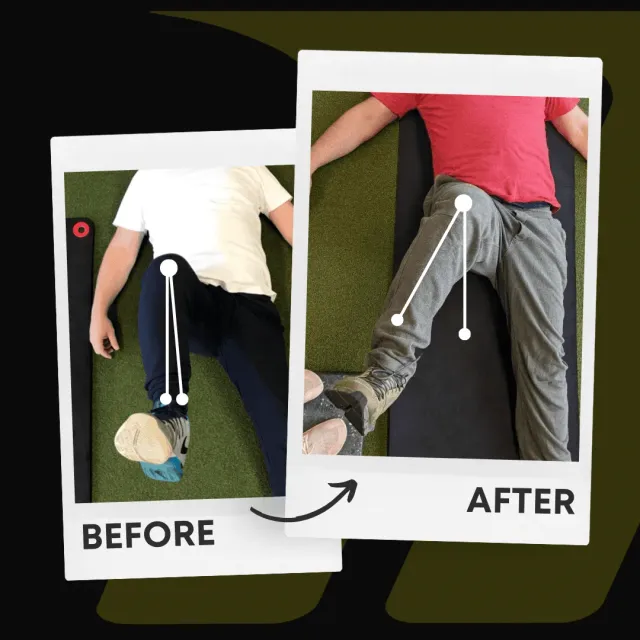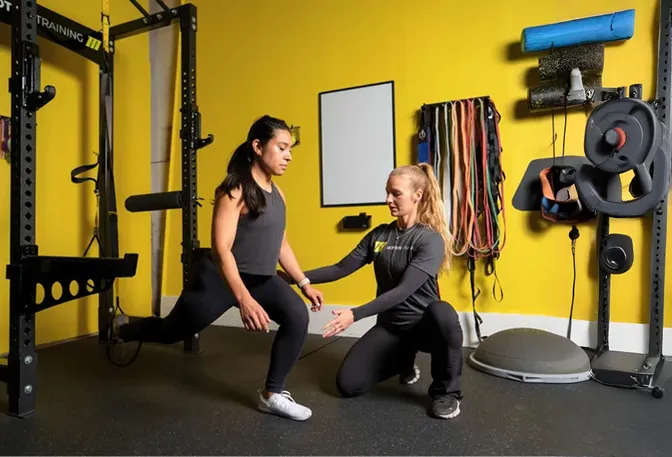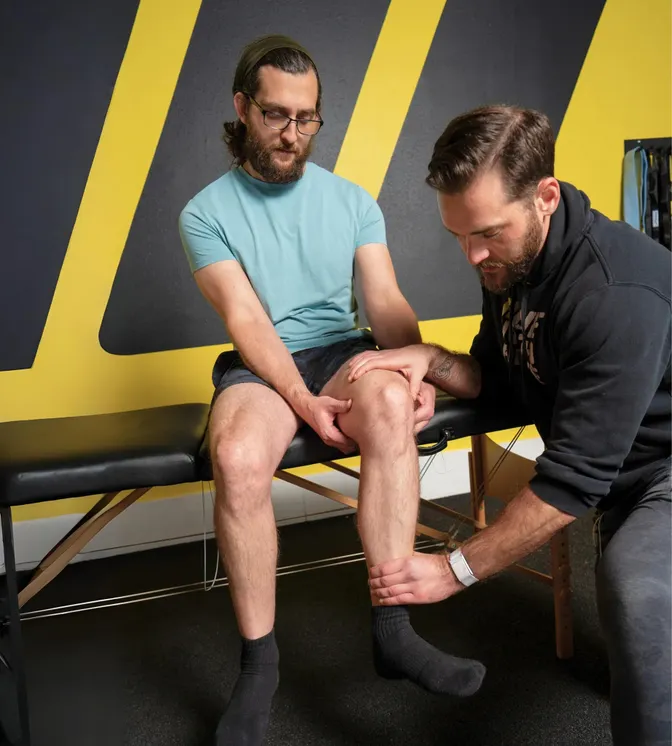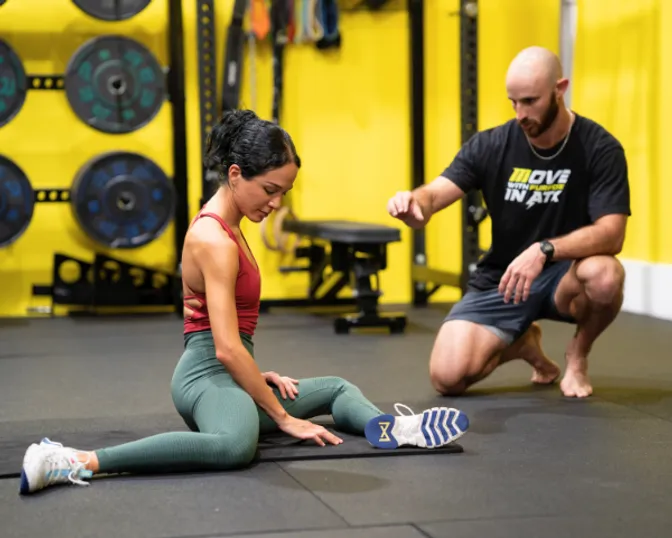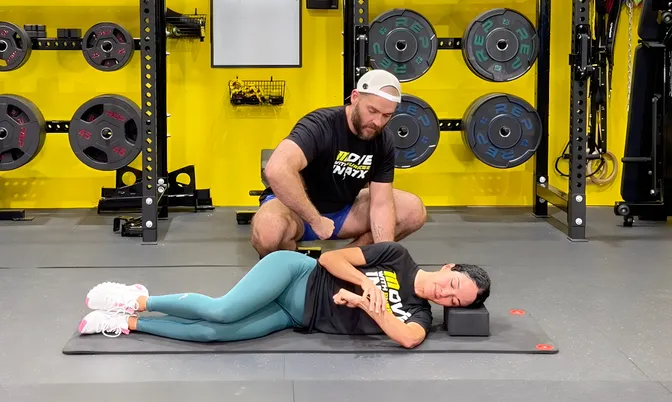Posture Training in Austin TX – How to Move Better, Not Just Sit Straighter
October 5, 2025 | Posture
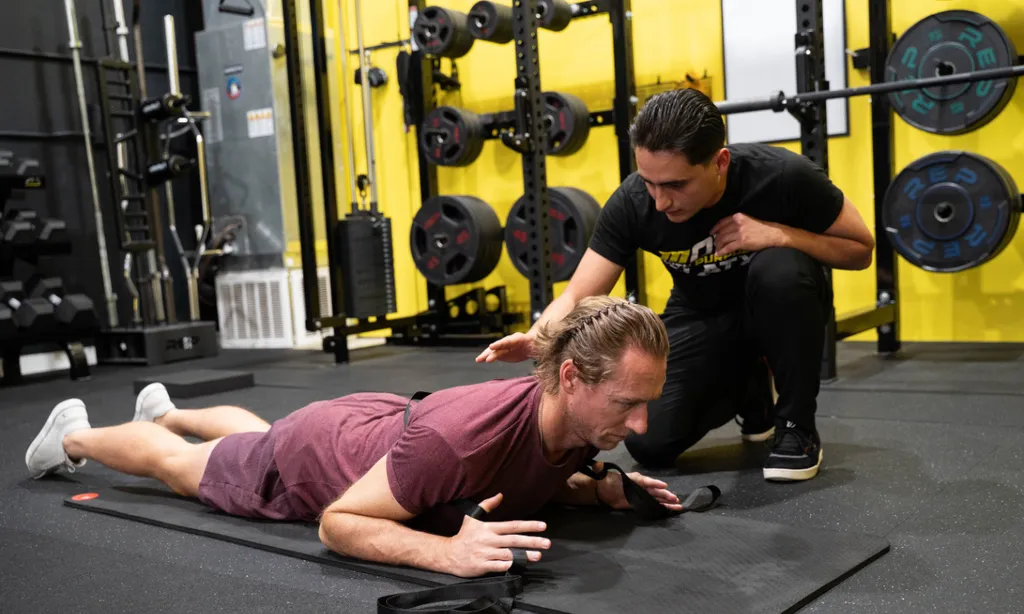
Most people think their posture is bad. You’ve probably caught yourself slouching at your desk or leaning to one side and thought, I need to fix that. But posture isn’t something you correct once and forget about—it’s something you manage through movement.
At Motive Training in Austin, we teach clients that posture isn’t about standing taller or sitting straighter; it’s about maintaining a balanced alignment throughout the body. It’s about learning how to move better, so your body can handle the demands of your day without pain or fatigue.
The Myth of Perfect Posture
There’s a common belief that poor posture directly causes pain, but the evidence doesn’t support that idea. You can find people with “perfect” posture who still have back pain, and others who slouch all day and feel fine. The truth is that posture isn’t a fixed position—it’s a dynamic behavior shaped by your daily habits, strength, and mobility.
Research over the past two decades has shown that static alignment is a weak predictor of pain. Instead, what often matters most is movement variability—your ability to shift positions, load tissues differently, and keep your joints healthy through regular motion. Sitting for hours, even in the so-called “right” position, still stresses the body in repetitive ways.
If you’re interested in how science actually views posture, check out this in-depth breakdown from The Mobility Blog.
Posture Is a Reflection of Movement Quality
Your posture is the outcome of how you move, not the other way around. Stiff joints, weak control, or limited ranges of motion will all affect how you stand and sit—especially over time. For instance, if your hips can’t extend properly, you might naturally lean forward when walking. If your thoracic spine lacks rotation, your neck may compensate, resulting in discomfort after prolonged periods at the computer.
That’s why improving posture starts with improving movement. You can’t cue yourself into better posture if your body doesn’t have the mobility or control to sustain it. Strengthening those missing ranges of motion is what gives your body the capacity to adapt.
How Motive Training Redefines Posture Work
At Motive Training, we take a distinct approach to traditional “posture correction” methods. We don’t use posture braces or rigid alignment drills. Instead, we assess how each joint moves and teach you how to control those movements actively.
Our process starts with a Functional Range Assessment (FRA) to identify your joint limitations and areas of imbalance. From there, we use systems like Functional Range Conditioning and KINSTRETCH to build strength at the edges of your mobility—where most people lack control.
This approach helps you:
- Increase usable range of motion in key joints.
- Improve strength and stability in end-range positions.
- Reduce stiffness by teaching the body to handle different postures with ease.
- Move through your day without constant tension or fatigue.
The result is posture that feels natural and adaptable, not forced or uncomfortable.
Why “Sitting Up Straight” Isn’t Enough
Trying to maintain an ideal posture all day is exhausting. Your muscles eventually give up, and you end up right back where you started—only more frustrated. The solution isn’t to hold a position longer; it’s to build the strength and control needed to change positions more often.
That’s where mobility training comes in. Practicing simple drills, such as controlled articular rotations (CARs) or end-range isometrics, helps your joints handle a wider range of motion. Over time, this means less strain, improved awareness of your posture, and fewer episodes of pain.
Practical Steps to Improve Your Posture
You don’t need an elaborate program to get started. These small habits go a long way toward improving posture and comfort:
- Change positions frequently—aim for movement breaks every 30–45 minutes.
- Use a mobility drill or two during the workday to keep your joints active.
- Strengthen your spine and shoulders through rotational and end-range work.
- Don’t chase symmetry. Instead, focus on control and awareness in how you move.
You can find more detailed mobility routines on our Mobility Training South Austin page.
Why Austin Professionals Benefit Most
Austin’s workforce spends long hours seated—developers, designers, and remote professionals alike. Add in long commutes and busy schedules, and posture problems quickly follow. What most people don’t realize is that the solution isn’t ergonomic chairs or standing desks; it’s the capacity for movement.
At Motive Training South Austin, we help you move better so sitting, standing, and lifting all feel easier. As your joints become stronger and your movement becomes more efficient, your posture naturally improves without the need for constant correction.
The Takeaway
Posture isn’t a battle against gravity—it’s a conversation with it. The better you move, the easier that conversation becomes. If you’re ready to understand your posture, reduce pain, and build lasting strength, it starts with learning how your body moves.
Read the full, research-backed article on posture and gravity over at The Mobility Blog, or schedule an assessment with us in Austin to learn how we can help you move better every day.
If you’re interested in exploring ideas, research, or opinion pieces around mobility training, stretching, and related topics, visit The Mobility Blog. It’s written by Brian Murray, founder of Motive Training, and it breaks down complex movement concepts into clear, actionable lessons. From joint control and pain management to performance optimization, The Mobility Blog is where science meets real-world training.
Written by
Brian Murray, FRA, FRSC
Founder of Motive Training
We’ll teach you how to move with purpose so you can lead a healthy, strong, and pain-free life. Our headquarters are in Austin, TX, but you can work with us online by signing up for KINSTRETCH Online or digging deep into one of our Motive Mobility Blueprints.
